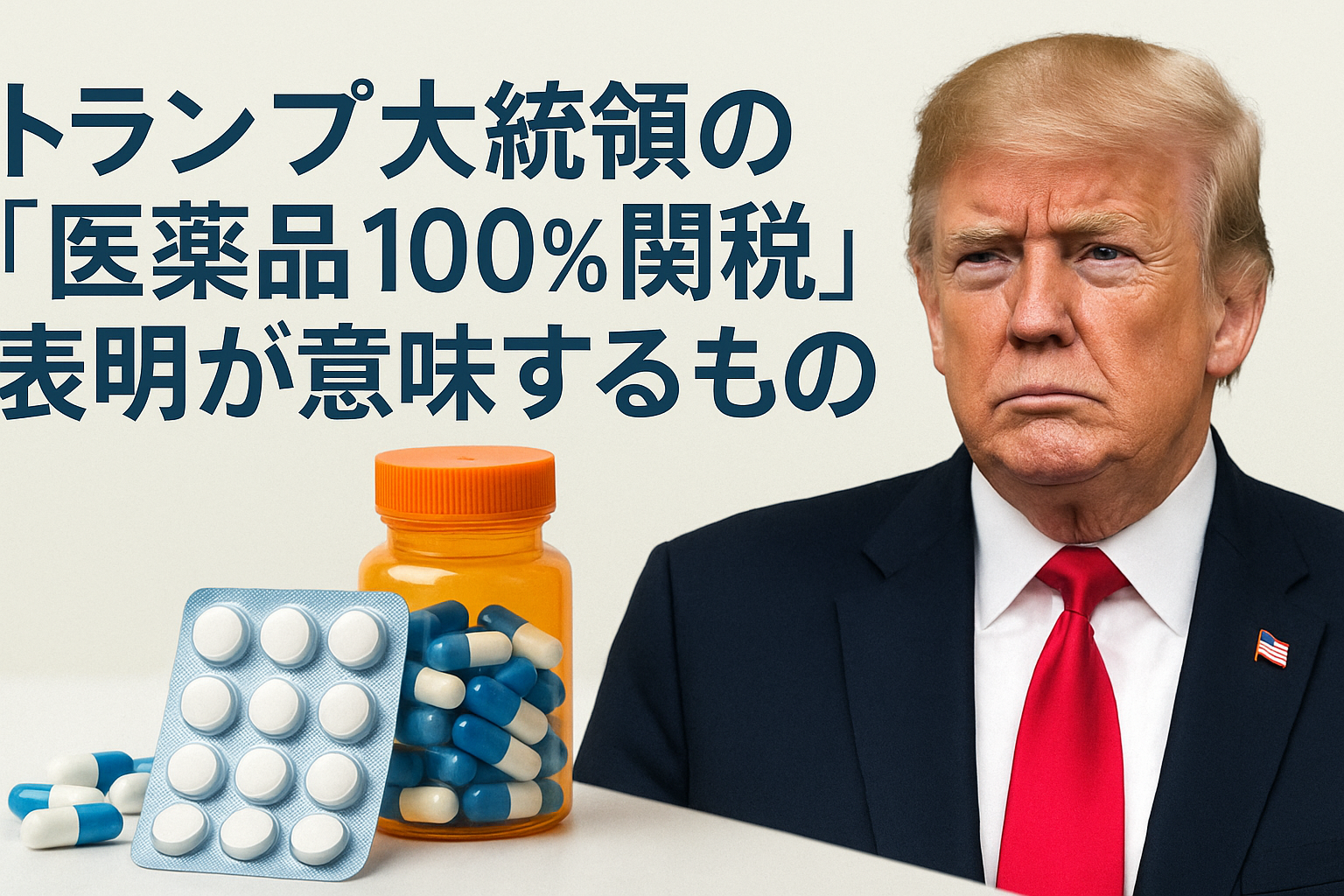The Sudden Announcement and Its Background
On September 25, U.S. President Donald Trump announced via social media that he would impose an additional 100% tariff on imported pharmaceuticals. The measure is limited to “brand-name drugs and patent-protected pharmaceuticals,” while generic drugs are expected to be exempt. With the effective date set for October 1—just around the corner—the announcement has sent shockwaves through the pharmaceutical industry and medical community.
This measure is regarded as part of the “sector-specific tariffs” that have followed steel, aluminum, auto parts, and copper products, and is said to be based on the U.S. Department of Commerce’s investigation under Section 232 of the Trade Expansion Act, which began in April.
An Incentive: “Exemptions for Plants Under Construction”
One notable point is the condition that if a pharmaceutical plant is “under construction” in the U.S., the tariff will be waived. Since this applies even at the groundbreaking stage, the measure effectively embeds an incentive for companies to make immediate investment decisions in the U.S. In fact, European companies have already accelerated their U.S. expansion: the U.K.’s GSK has announced a $30 billion investment over five years, while AstraZeneca has unveiled plans for a $50 billion-scale investment. Trump’s announcement further reinforces these moves.
The “15% Cap” Agreement with Japan and the EU
Meanwhile, Japan and the EU have secured an agreement with the U.S. to “cap pharmaceutical tariffs at 15%.” On the surface, this seems to shield them from the impact of the 100% tariff. However, how this “exception” will actually be applied remains unclear. The Trump administration likely retains room to use tariffs flexibly as a bargaining tool in negotiations.
Concerns and Ripple Effects
The American Hospital Association (AHA) has expressed concerns over “difficulties in accessing medicines.” Many brand-name drugs include cancer treatments and immunosuppressants—life-critical medications—meaning price hikes will directly affect patients and healthcare systems. Pharmaceutical companies, in turn, will be forced to urgently consider U.S. investments, which could accelerate the restructuring of global supply chains.
For Japanese companies, the immediate direct impact appears limited. Yet, in the longer term, there is a growing risk of mounting pressure to invest locally in order to maintain a presence in the U.S. market.
Conclusion — From Tariff Policy to Industrial Policy
This “100% tariff” can be seen not merely as a trade dispute, but as an industrial policy aimed at restoring domestic manufacturing capacity. As evidenced by the massive investments of major European players, the pharmaceutical industry is effectively moving toward a situation where “having a plant in the U.S. is a prerequisite for market entry.”
In the highly public-interest field of pharmaceuticals, this use of tariffs as a tool of industrial guidance is likely to become another factor heightening tensions in the global economy.

